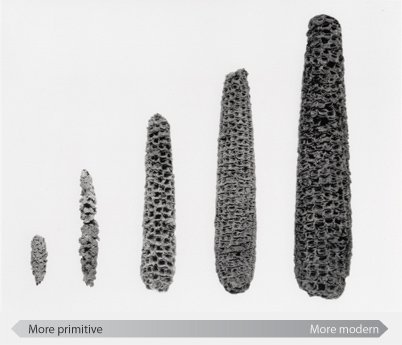This page has content that requires the Flash Player plug-in. Unfortunately, we can't do anything on our end to improve your experience with Flash. If you are using an iOS device, please note that these devices do not support Flash. We are slowly working on replacing our popular Flash-based content and will update this content as it becomes available. If you would like to help us as we work on these updates, please consider donating here.
The history of modern-day maize begins at the dawn of human agriculture, about 10,000 years ago. Ancient farmers in what is now Mexico took the first steps in domesticating maize when they simply chose which kernels (seeds) to plant. These farmers noticed that not all plants were the same. Some plants may have grown larger than others, or maybe some kernels tasted better or were easier to grind. The farmers saved kernels from plants with desirable characteristics and planted them for the next season's harvest. This process is known as selective breeding or artificial selection. Maize cobs became larger over time, with more rows of kernels, eventually taking on the form of modern maize.
The identity of maize's wild ancestor remained a mystery for many decades. While other grains such as wheat and rice have obvious wild relatives, there is no wild plant that looks like maize, with soft, starchy kernels arranged along a cob. The abrupt appearance of maize in the archaeological record baffled scientists. Evolution was generally thought to occur gradually through minor changes. Why did maize appear so suddenly?
See more examples of artificial selection

Maize cobs uncovered by archaeologists show the evolution of modern maize over thousands of years of selective breeding. Even the oldest archaeological samples bear an unmistakable resemblance to modern maize. Photo © Robert S. Peabody Museum of Archaeology, Phillips Academy, Andover, Massachusetts. All Rights Reserved.

